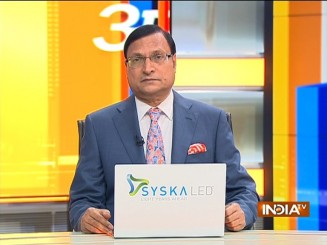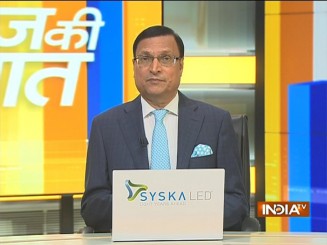50 crore devotees at Maha Kumbh : Yogi has come out with flying colours
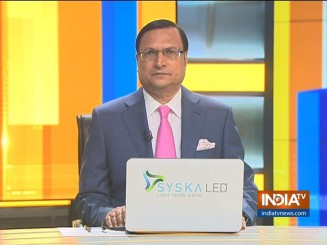 Nearly two crore devotees took a holy dip at the Maha Kumbh on the occasion of Maghi Purnima on Wednesday. The population of the city of Prayagraj is roughly 60 lakhs, and the devotees that reached the Maha Kumbh was four times that number. There was no stampede, no panic, and the devotees took their holy dip amidst chants of hymns and bhajans.
Nearly two crore devotees took a holy dip at the Maha Kumbh on the occasion of Maghi Purnima on Wednesday. The population of the city of Prayagraj is roughly 60 lakhs, and the devotees that reached the Maha Kumbh was four times that number. There was no stampede, no panic, and the devotees took their holy dip amidst chants of hymns and bhajans.
The Maha Kumbh has completed almost one month, and more than 50 crore people have taken their holy dip in the last 30 days. Except India and China, this figure of 50 crore is more than the population of any country. If one adds the population of 119 countries of the world, it could reach 50 crore. This is really unimaginable and unbelievable.
Concerns were being expressed by opposition leaders over how the UP government would handle such a huge number of devotees and Chief Minister Yogi Adityanath has come out with flying colours.
The day was really challenging, Yogi woke up soon after midnight and reached the war room set up at the Chief Minister’s residence as live visuals of devotees at the Maha Kumbh started pouring in. Yogi personally monitored the flood of devotees with UP Police chief Prashant Kumar, Principal Secretary (Home) Sanjay Prasad and other senior officials sitting by his side.
By 11 am, when it appeared that everything was smooth, Yogi left his residence. At Baghpat in western UP, Yogi apologized to the crowd for being late and told people that he was hopeful about the total number of devotees crossing 50 crore by the end of the day.
Without naming former CM Akhilesh Yadav, Yogi lashed out at leaders who were trying to create a scare and dissuading devotees not to go to Prayagraj. “People know what the reality is and they are not going to listen to those leaders who sneak into the Maha Kumbh to take a holy dip”, Yogi said.
Yogi’s top officials were on the toes to ensure that there were no unnecessary jams in Prayagraj, Ayodhya, Varanasi, Mirzapur and Chitrakoot. Senior policemen were deployed to ensure that there was no obstruction in movement of people and vehicles.
The first challenge that Yogi Adityanath faced was, how to handle the huge crowd that would assemble at the Maha Kumbh. Managing such a huge number is not an easy job, but the entire world has now noticed how the crowd was managed in a peaceful manner.
Yogi’s second challenge was, more and more devotees were moving towards Maha Kumbh from different states like MP, Bihar, Chhattisgarh, Jharkhand, Bengal and Odisha, after seeing visuals of other devotees taking a holy dip on TV.
Yogi’s third challenge was, a large number of devotees after attending the Maha Kumbh were going to Ayodhya for the darshan of Lord Ram Lala at the new temple and were also visiting Varanasi to take the blessings of Lord Vishwanath. These two cities were facing the spillover of devotees returning from Prayagraj. Naturally, more police force was required and arrangements had to be made for food, water, sanitation and stay for the devotees. This was a huge responsibility for Yogi’s government.
The final challenge came from politicians from the opposite spectrum. They were taking potshots at Yogi after the stampede that took place on Mauni Amavasya. Some alleged that thousands of devotees died, some other criticized what they called “failure of crowd management”, and most of the opposition leaders blamed “VIP culture”. But the fact is, leaders who were levelling allegations, went quietly to the Maha Kumbh, took their holy dip and came back unannounced.
Congress leader Digvijaya Singh took a dip on Wednesday, while Akhilesh Yadav had gone to Maha Kumbh a few days ago. Both admitted that they faced no problems while going to the Maha Kumbh as commoners.
By ensuring perfect crowd arrangement at Maha Kumbh, Yogi has given a stinging reply to the opposition. Yogi showed that Akhilesh Yadav’s allegations do not hold water.
By ensuring that more than 50 crore devotees went to the Maha Kumbh and returned safely, Yogi Adityanath has displayed his dexterity in crowd management and he deserves praise.
Sleazy and Vulgar : YouTubers Do Not Deserve Pardon
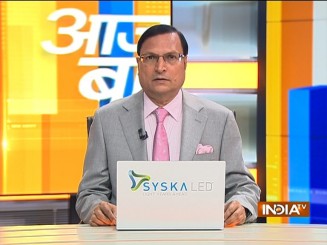 At a time when millions of Indians at the Maha Kumbh in Prayagraj are presenting wonderful images about India’s cultural ethos before an unbelieving world, a handful of YouTubers, in order to make quick money, have brought shame to our country by crossing the limits of decency. They made vulgar remarks about family values and uttered nonsense about the private parts of females in the guise of ‘dark humor’.
At a time when millions of Indians at the Maha Kumbh in Prayagraj are presenting wonderful images about India’s cultural ethos before an unbelieving world, a handful of YouTubers, in order to make quick money, have brought shame to our country by crossing the limits of decency. They made vulgar remarks about family values and uttered nonsense about the private parts of females in the guise of ‘dark humor’.
Some of their remarks were so cheap and grossly vulgar that I cannot repeat here. In TV shows, comedians in the past used to make bawdy remarks, but they never crossed the limits of decency.
The YouTubers in question, claim to be social media influencers. They were taking part in the show ‘India’s Got Latent’, but after a nationwide outrage over these vulgar and cheap remarks, YouTube had to block the videos of the show on its platform. YouTubers Ranveer Allahabadia at as the judge in the show, and content creator Apoorva Makhija, standup comedians Ashish Chanchlani and Jaspreet Singh on the panel. Samay Raina was also present at the host in the show that was shot at The Habitat Club in Mumbai.
On social media, negative things become ‘viral’ immediately. There was a barrage of objections from viewers, and two lawyers of Bombay High Court wrote a letter to the Police Commissioner and the Women’s Commission to take action. Maharashtra chief minister Devendra Fadnavis promised stern action against those who crossed the limits of decency.
The matter is serious because Ranveer Allahabadia has a huge following on social media and his podcast channel on YouTube has 10.5 million subscribers. His other channel BeerBiceps has more than 8 million subscribers. Allahabadia has more than 6 lakh followers on X and 4.5 million followers on Instagram. Mumbai Police has already begun investigation and police reached Allahabadia’s residence on Tuesday.
The YouTubers who have made sleazy and obscene comments about parents do not deserve pardon. One must remember they did not commit the mistake unknowingly, but were following a pre-planned, pre-written script. This was not a slip of tongue. It was a copy of a prepared skit from an English show.
This incident has exposed YouTubers who have no morals, no values. Their only aim is to earn more by raising the number of their followers. None of them bother about the effect that they leave on society. I am astonished that some political parties and marketing experts start considering such people as influencers, by watching the number of their followers and subscribers. They believe that in order to connect with the new generation, such ‘influencers’ must be used.
Many of the YouTubers doing good work have less number of subscribers and followers. Nobody thinks about them. The YouTubers who have peddled obscenity have done an irresponsible act and they have harmed the good work done by other YouTubers. They have brought the credibility of all YouTubers to question.
This has not happened for the first time. A few days ago, one YouTubers was caught selling snake venom. Those who call such people as influencers must realize that the ‘influence’ of such people is always temporary. In order to gain credibility and make a lasting place in the hearts of people, one needs moral strength and a felling of responsibility towards society.
Credibility is the key to a permanent place in media. And this is missing in the case of several of the YouTubers.
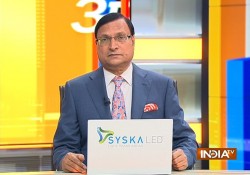
Maha Kumbh stampede : Need for greater caution, care and restraint
The stampede that took place at Maha Kumbh past midnight in Prayagraj is really saddening and unfortunate. My deepest condolences to the families of those who died and my prayers for early recovery of those who were injured. I expect the local administration to be more careful considering the huge influx of pilgrims. I also appeal to the devotees to practise constraint while going to take the holy dip.
Sadhus of different ‘akhadas’ who were waiting for the holy dip on Wednesday morning because of the stampede, have started their ‘Amrit Snan’ by noon. The situation is now normal and under control. Rapid Action Force has been deployed to beef up security.
Last night, I had mentioned in my primetime show ‘Aaj Ki Baat’ that the arrangements at the Kumbh Mela area was under stress because of influx of more than 5 crore pilgrims. The number of pilgrims who came to Maha Kumbh crossed 18 crores in the last 16 days. Imagine the population right now in Prayagraj, compared to the populations of some of the most populated cities of the world like Tokyo, Delhi and Shanghai.
Since, it was Mauni Amavasya on Wednesday, pilgrims started marching towards the Sangam point in large numbers after midnight and the barriers broke down. The crowd became unmanageable. The overworked police force was finding it difficult to control the crowds breaking through the barriers.
Devotees had come from the North, South, East and Western parts of India, from places like Maharashtra, Gujarat, Bengal, Uttarakhand, Himachal Pradesh, Jammu and Kashmir, Tamil Nadu, Andhra Pradesh and Kerala. Imagine the stress that the organizers were going through because of this influx.
The enthusiasm among the devotees was electrifying on Tuesday. Entire families consisting of four generations had come to Prayagraj to take the holy dip. From some states, people from an entire village or a locality had come. The authorities had put signages in every sector, each pillar was numbered, and announcements were being made for those who were lost. Volunteers were deployed at a distance of 100 metres throughout the Mela area. Lost and found centres were working in 10 sectors so that those who lost their way could reunite with their families.
There are three main reasons behind this huge influx. One, the level of devotion and enthusiasm among the pilgrims; Two, videos and images on TV and social media, of people coming to Maha Kumbh for the last two weeks, acted as a big influencing factor; and Three, since the Maha Kumbh was taking place after a gap of 144 years, most of the devotees felt that they might not get another chance in their lifetime to take part in the biggest religious congregation of the century.
Normally, it is presumed that the younger generation does not have much interest in religion, but the videos and images of Maha Kumbh belie this theory. There is a craze among youths for taking part in Maha Kumbh. College girls in small groups, youths with backpacks studying IT, engineering, medical and management course have reached Prayagraj for the holy dip. Most of the youths are carrying smartphones and posting their videos on social media.
It is true that the administration had no inkling about the huge influx that was going to take place on the eve of Mauni Amavasya. Several buses, trains and vehicles had to be stopped away from Prayagraj town. Lakhs of people had to walk several kilometres to reach the bathing ghats.
In the middle of this huge influx, devotees walking for several kilometres due to barriers, get irritated when they see VIP vehicles with police escorts, with hooters blaring, making their way through the crowds. Such a reaction comes naturally. My suggestion is: authorities should curb the number of VIP vehicles entering the Kumbh Mela area for a few days so that the crowds melt away after some days.
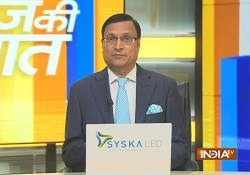
Maha Kumbh : Yogi’s wonderful planning and management
I had the opportunity to visit the Maha Kumbh Mela at the Triveni Sangam in Prayagraj, where I recorded a special TV show with UP Chief Minister Yogi Adityanath. I asked questions relating to all issues that have been raised about Maha Kumbh.
The questions ranged from whether the water at Sangam was fit for bathing and drinking, the mode of measurement of the crowds that led to the claim that more than 9 crore pilgrims visited Maha Kumbh in the first week, the arrangements that were made for their food, hygiene and cleanliness.
There was also a question on how much UP would gain from religious tourism by spending Rs 7,500 crore on Maha Kumbh. There were some political questions too, like what was the need to convene a full-fledged Cabinet meeting at Maha Kumbh, whether entry of Muslims to the Kumbh Mela area has been banned, whether his ‘Bantogey Toh Katogey’ slogan was raised at the Mela?
Yogi Adityanath did not evade any question. He replied to each question, clearly and succinctly. There were several thousand people watching him speak. The audience was highly enthusiastic. Earlier, police had set up barricades to stop people from approaching the TV stage. When I saw from the stage, people shouting slogans and waving hands from a distance, I requested Yogi to ask police to allow people to come nearer. Yogi immediately responded and asked police to allow people to come nearer.
The response was electrifying. Several thousand people began running towards the TV discussion area, shouting slogans of ‘Jai Shri Ram’, ‘Har Har Mahadev’. The entire show with Yogi Adityanath will be telecast on India TV on Republic Day eve, Saturday (January 25) at 10 pm.
In my ‘Aaj Ki Baat’ show on Thursday night, I showed a question-answer sample. By watching it, you can have a fair glimpse of how the common public was involved in the TV discussion. Yogi Adityanath’s replies were emphatic. Due to time constraints, I could stay at the Kumbh township only for a few hours, but the zeal and energy level of pilgrims was astonishing and unique.
From all directions, thousands of people were walking long distances to reach the pontoon bridges to take a dip at the Sangam, considered the holiest place on Earth during Maha Kumbh Mela. Only a limited number of vehicles were allowed to enter and most of the people were walking continuously in the direction of the bathing ghats. Some carrying backpacks, some carrying loads on their heads, but most of them were nonchalant. Most of the pilgrims looked happy.
At several places, ‘bhandara’ (free kitchens) were arranged for providing food to the pilgrims. The rest were singings bhajans as they marched towards the ghats.
At some places, those from the ‘nat’ (traditional acrobats) community were holding their shows, with a girl walking on a tight rope. At some places, babas with hairlocks on their heads were giving ‘pravachan’ (sermons) to the devouts listening attentively. Shopkeepers selling goods on ‘rehdi, thela, khomcha’ (handcarts) were doing good business. Somebody told me ‘chaiwallahs’ were earning as much as Rs 20-22 thousand a day at the Mela, while beds were available for Rs 100 for a single night. Those who could afford were staying in luxury tents paying up to Rs one lakh.
Overall, the arrangements were foolproof. From common people, I was surprised to hear praises for UP police. Most of them were saying that the police were helping them as friends. Lakhs of people were visiting Prayagraj in trains. The station was kept clean and policemen were deployed to keep a close watch. Those having apps on their mobile phones were told when their trains would leave, and when a train would arrive at the platform. Policemen were seen helping the aged from being pushed around in the melee. The director general of UP Police told me that police personnel were given training for six months on how to deal with the crowds patiently and in a friendly manner. In my TV show, Chief Minister Yogi Adityanth praised his police.
You can gauge the vast magnitude of work that was put in efficiently, only when you visit the Maha Kumbh. The most happy ones were the sadhus and other ascetics. Their sermons were being shown on TV and other platforms. Some holding their arms high, some sitting cross-legged in front of a fire, some using ‘chimtas’ (iron tongs) to ward off pesky people. The crowd was crazy to see Naga sadhus, who do not wear even a loincloth and perform their penance under hard conditions.
A sadhu told me that it was the media which was taken the electrifying spirituality of the Maha Kumbh to each and every home in India, by adding a touch of glamour. This was the reason why people, in millions, are visiting Maha Kumbh daily.
Yogi Adityanath himself is doing a hands-on job. He has been visiting the Kumbh almost every other day. On Wednesday, he was there with his contingent of 54 cabinet ministers, and all of them took a holy dip at the Sangam. It was only after Yogi and his ministers took their holy dip, that the chief minister came to join my TV show.
Maha Kumbh: World’s Biggest Event Ever
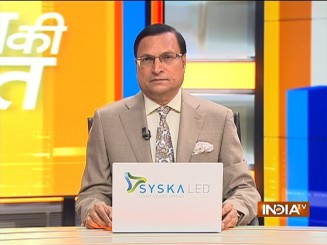 On January 13 this year, the world will witness the beginning of the world’s biggest event ever at the holy Sangam in Prayagraj, Uttar Pradesh, where more than 40 crore devotees are expected to take a holy dip at the confluence of two rivers, Ganga and Yamuna.
On January 13 this year, the world will witness the beginning of the world’s biggest event ever at the holy Sangam in Prayagraj, Uttar Pradesh, where more than 40 crore devotees are expected to take a holy dip at the confluence of two rivers, Ganga and Yamuna.
Chief Minister Yogi Adityanath is personally supervising the mega arrangements. A sprawling township has come up on an area of nearly 5,000 acres, ready with 1.5 lakh tents, 1.5 lakh green toilets manned by 15,000 safai karmacharis, 1,240 km long pipe lines have been laid, and more than 50,000 tap water connections have been provided. Two km away from Sangam, a huge space has been kept for parking more than 20,000 vehicles. Two hospitals, one with 100 beds and another with 220 beds have already started working. 92 new roads have been laid, and the Sangam township is dazzling with 67,000 LED lights and 2,000 solar lights.
The entire township has been divided into 25 sectors. The Sangam township has been declared a separate district, having its own district magistrate and Superintendent of Police. The first ‘shahi snan’ (main bathing) will take place on January 13 and the last ‘shahi snan’ will be on February 26. Twelve new bathing ghats (banks) have been built and a riverfront has been developed over 12.5 km area. Chequered plates have been laid on an area of 550 sq km to ensure that the devotees do not have to walk in mud.
Yogi Adityanath on Tuesday conducted a survey of the Kumbh Mela preparations and expressed his satisfaction. Thirty pontoon bridges will be built, out of which 28 are ready. More than 50,000 security personnel from UP Police and para-military forces will be deployed. They will be commanded by 218 IPS officers. Underwater drones, that can go 100 metre deep, will be used for the first time in Kumbh Mela. Four central commands will work in tandem with a control room. Nearly 350 experts will monitor the areas that will draw huge crowds.
Kumbh Mela takes place after every 12 years. This time, it has been named Purna Maha Kumbh, because it will occur after 144 years (12 Maha Kumbh Melas multiplied by 12). Astrologers and Sanatan spiritual leaders have described this as the most auspicious occasion. Yogi Adityanath is leaving no stone unturned to make this mega event a success.
Prime Minister Narendra Modi is also involved in finetuning the arrangements. Modi has advised use of digital technology to project the rich heritage of Kumbh Melas. The aim is to attract youths towards India’s ancient heritage. The broader objective is to convey India’s message of devotion and faith to the rest of the world. It is surely going to be a spectacular event.
